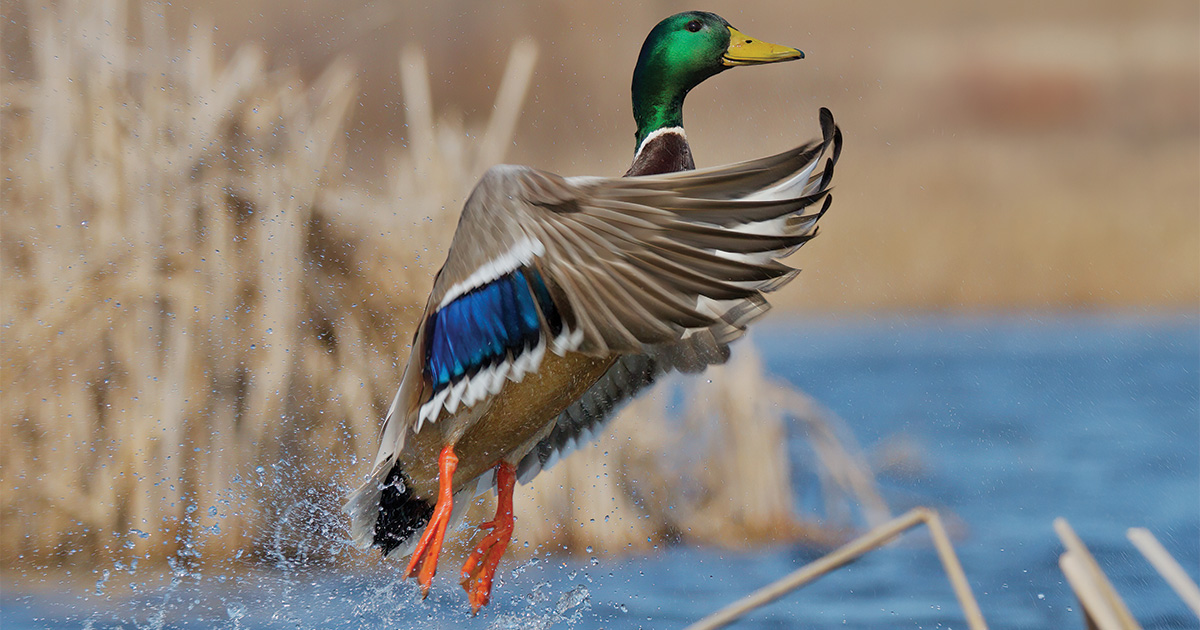Migration Alert: Good Habitat, Strong Production Bodes Well for North Atlantic Flyway Hunters
Oct. 3, 2025 – Atlantic Flyway – North Atlantic Flyway Preview
Oct. 3, 2025 – Atlantic Flyway – North Atlantic Flyway Preview

Duck and goose hunters in the Atlantic Flyway have reason to be optimistic heading into the 2025–26 duck season. Thanks to early spring rains, overall nesting conditions in the region were ideal. A warm, drought-like summer has dried out some wetlands, and while this has reduced open water, it has increased the food base in the form of seeds and tubers, providing plenty of fuel for migrating ducks.
“Wetland habitat conditions for Atlantic Flyway breeding waterfowl in 2025 were reported as stable to wet,” reports Amanda Hoyt, Ducks Unlimited biologist in the Great Lakes/Atlantic Region. “Compared to regions like the prairies, which are currently experiencing drought conditions, the Atlantic Flyway breeding grounds in the northern states and Canadian provinces are generally more stable and less influenced by seasonal variations in precipitation.”
As a result of available nesting habitat, the hatch was good, mirroring last year’s success. This should result in a healthy fall flight, particularly for early-season migrants, which Hoyt reports have already started their journey southward.
“The 2025 Waterfowl Population Status report indicated similar results to last year’s survey,” Hoyt adds. “The reported average to stable population estimates should lead to good fall flights with some of our early migrants like teal already making their way south.”
Though the migration has already started, don’t expect to see any big pushes just yet. Those will come later, when a weather event intervenes.
“There’s no major weather event making ducks move right now. Their initial movement is based on photoperiod (daylength). Then they wait for weather to push them further south. They trickle down gradually,” says Dr. Mike Schummer of the FowlWeather podcast.
“They’ve finished breeding, the young can fly, and they start filtering south. For example, about 50 percent of the mallards we banded at Onondaga Lake in August and September came from Canada. So, they’re moving ahead of the weather and just hanging around until something pushes them. This is typical for this time of year,” he says.
Schummer points out that the lack of rain during the summer months led to a bumper crop of duck food, which would benefit from a couple of big storms to flood the vegetation. The South- and Mid-Atlantic are poised to receive a mess of rain, but New England looks like it will be dry for much of the coming month—unless some of the storms developing to the South find their way up the flyway.
And in the coming years, ducks—and hunters—will have some more areas to call their own. Ducks Unlimited continues to make investments in the Atlantic Flyway that will not only benefit migrating and wintering waterfowl but also improve future hunting opportunities throughout the region. These efforts focus on restoring and enhancing critical wetland habitats, particularly along key migration corridors and wintering areas.
In Massachusetts, DU is leading a 1,450-acre tidal salt marsh restoration at Parker River National Wildlife Refuge. This project, expected to wrap up by December 2026, will improve habitat quality for a wide range of waterfowl species.
Along the shores of Lake Ontario in New York, a project is under way to enhance 150 acres of cattail-dominated marsh by implementing a channel and pothole technique. This approach increases open water habitat, diversifies vegetation, and restores natural water flow, which is ideal for both dabbling and diving ducks.
In the northwest corner of Pennsylvania, 126 acres are being enhanced across six wetlands on public land. With the installation of new water-control structures, managers will be able to manipulate water levels to support waterfowl during both migration and nesting seasons.
On the Eastern Shore of the Chesapeake Bay, 25 acres of wetlands on public lands are being restored, enhancing stopover habitat in one of the Atlantic Flyway's most important wintering areas for black ducks, mallards, and more.
As the 2025– 26 season unfolds, waterfowlers in the Atlantic Flyway should keep a close eye on the weather and be ready to adapt. The ducks are here, the hatch was strong, food is abundant, and habitat conditions are stable—but major movements will likely come on cold fronts or rain events. In the meantime, success will favor those who scout hard and focus on remaining water sources, where ducks are likely to concentrate early in the season.
Stay up to date with the latest migration information.
Ducks Unlimited uses cookies to enhance your browsing experience, optimize site functionality, analyze traffic, and deliver personalized advertising through third parties. By continuing to use this site, you agree to our use of cookies. View Privacy Policy